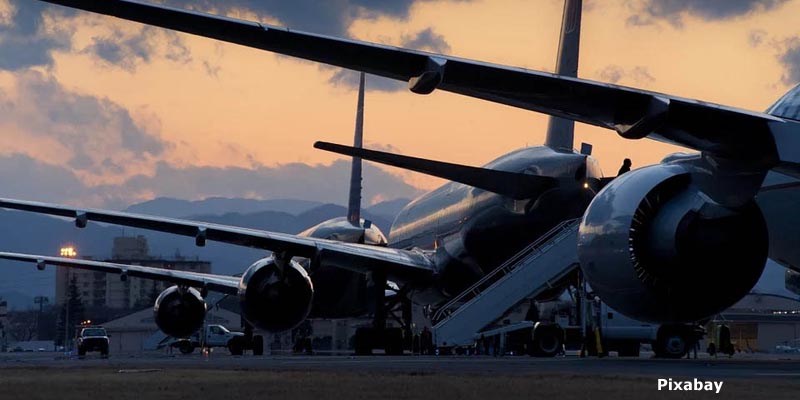The financial results of the air transport companies were catastrophic in the third quarter, whose timid recovery is being undermined by the second wave of covid-19, AFP reported.
The International Air Transport Association (IATA) evaluates the drop in air traffic at 66%.
See also: IATA says COVID-19 Testing and Continued Financial Support Crucial to Save Air Transport.
At Paris airports alone, the drop for the year could be 70%, an upward revision of a previous estimate of 65% for the two airports of Orly and Charles de Gaulle.
“Six months after the start of the crisis in Europe and the United States, the indicators do not show any signs of a rapid recovery (…) this crisis will be long-lasting and will not be a V-shaped one” with a brutal fall followed by a rapid recovery, explains the consulting agency Alix Partners in a study.
See also: Delta loses $11.63 billion through September from the impact of the coronavirus.
After the practical suspension of air traffic worldwide during the spring (boreal), the recovery began very slowly, particularly in domestic flights, from June before reaching a peak in August to fall again in September.
“Stress test” in winter
“The winter season (in the northern hemisphere) will be a stress test for companies,” according to Alix Partners.
In the United States, the main airlines American Airlines, SouthWest, Delta and United Airlines announced in October revenues in free fall in the third quarter. American Airlines, number one in the sector in the United States, announced a 73% fall in revenue.
In the absence of an agreement to support the airline industry in Washington after subsidies to help pay workers were suspended, thousands of people are out of work.
In Asia, the Hong Kong company Cathay Pacific announced on Wednesday the elimination of 5,900 jobs, a quarter of its workforce and the closure of its subsidiary Cathay Dragon.
In Europe, IAG (parent company of British Airways and Iberia) and Lufthansa will drastically reduce their offer in the fourth quarter, to a maximum of 30% compared to last year’s offer for IAG and 25% for the German company.
The Scandinavian SAS concluded negotiations on a social plan with the suppression of 5,000 jobs, 40% of the workforce, the company announced on Friday.
LATAM, the biggest airline in Latin America, and its subsidiaries plan to operate in October at 24% and 26% of its capacity, compared to the same month last year, the company recently indicated, that it suffered a 75.9% fall in income in the second quarter, and dispensed with some 12,600 workers. In June, LATAM announced the closure of its subsidiary in Argentina.
Catastrophic” job losses
For Iata, “the prospect of job losses of a catastrophic magnitude is very real,” Rafael Schvartzman, the organization’s vice president for Europe, said this week as he called for new financial support from governments until the “industry can get back on its feet.
“We will have a very small industry, with fewer players. All companies do not have enough resources to survive,” John Strickland, an air transport consultant who is cautious about the time frame to return to normal, told AFP.
“The environmental factor adds an important element” to the situation, he adds, referring to the boycott movement of aircraft considered too polluting that began before the pandemic.
In the section on good news, the British Flybe, which had declared bankruptcy, could fly again in early 2021, after the announcement on Monday that it had been acquired by Thyme Opco, a company controlled by the investment fund Cyrus Capital.
To try to recover, companies and airports are calling for large-scale pre-flight diagnostic testing to avoid quarantine measures on arrival, which discourages many candidates from traveling.
London Heathrow Airport has been conducting a paid saliva test for travellers to Hong Kong and from Italy since Tuesday, with the result within an hour.
In Paris, antigen tests – with faster results than PCR – will soon be compulsory for some destinations.
This historical crisis also has consequences on the structure of the fleets of the companies that separate themselves from the older and more polluting big airplanes like the Boeing 747, A380, A340 and must bet on the single-aisle planes, while the long-range flights continue to be the most affected by the crisis.
All Nippon Airways (ANA), Japan’s leading airline, announced that it plans to divest itself of half of its 60 large aircraft.
Líder en noticias de aviación
